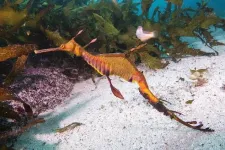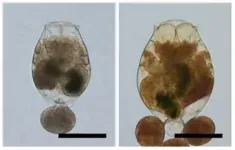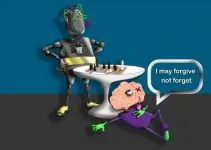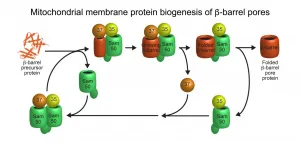WSU scientists identify contents of ancient Maya drug containers
2021-01-15
(Press-News.org) PULLMAN, Wash. - Scientists have identified the presence of a non-tobacco plant in ancient Maya drug containers for the first time.
The Washington State University researchers detected Mexican marigold (Tagetes lucida) in residues taken from 14 miniature Maya ceramic vessels.
Originally buried more than 1,000 years ago on Mexico's Yucatán peninsula, the vessels also contain chemical traces present in two types of dried and cured tobacco, Nicotiana tabacum and N. rustica. The research team, led by anthropology postdoc Mario Zimmermann, thinks the Mexican marigold was mixed with the tobacco to make smoking more enjoyable.
The discovery of the vessels' contents paints a clearer picture of ancient Maya drug use practices. The research, which was published today in Scientific Reports, also paves the way for future studies investigating other types of psychoactive and non-psychoactive plants that were smoked, chewed, or snuffed among the Maya and other pre-Colombian societies.
"While it has been established that tobacco was commonly used throughout the Americas before and after contact, evidence of other plants used for medicinal or religious purposes has remained largely unexplored," Zimmermann said. "The analysis methods developed in collaboration between the Department of Anthropology and the Institute of Biological Chemistry give us the ability to investigate drug use in the ancient world like never before."
Zimmermann and colleagues' work was made possible by NSF-funded research which led to a new metabolomics-based analysis method that can detect thousands of plant compounds or metabolites in residue collected from containers, pipes, bowls and other archaeological artifacts. The compounds can then be used to identify which plants were consumed.
Previously, the identification of ancient plant residues relied on the detection of a limited number of biomarkers, such as nicotine, anabasine, cotinine and caffeine.
"The issue with this is that while the presence of a biomarker like nicotine shows tobacco was smoked, it doesn't tell you what else was consumed or stored in the artifact," said David Gang, a professor in WSU's Institute of Biological Chemistry and a co-author of the study. "Our approach not only tells you, yes, you found the plant you're interested in, but it also can tell you what else was being consumed."
Zimmermann helped unearth two of the ceremonial vessels that were used for the analysis in the spring of 2012. At the time, he was working on a dig directed by the National Institute of Anthropology and History of Mexico on the outskirts of Mérida where a contractor had uncovered evidence of a Maya archeological site while clearing lands for a new housing complex.
Zimmermann and a team of archeologists used GPS equipment to divide the area into a checkerboard-like grid. They then hacked their way through dense jungle searching for small mounds and other telltale signs of ancient buildings where the remains of important people such as shamans are sometimes found.
"When you find something really interesting like an intact container it gives you a sense of joy," Zimmermann said. "Normally, you are lucky if you find a jade bead. There are literally tons of pottery sherds but complete vessels are scarce and offer a lot of interesting research potential."
Zimmermann said the WSU research team is currently in negotiations with several institutions in Mexico to get access to more ancient containers from the region that they can analyze for plant residues. Another project they are currently pursuing is looking at organic residues preserved in the dental plaque of ancient human remains.
"We are expanding frontiers in archaeological science so that we can better investigate the deep time relationships people have had with a wide range of psychoactive plants, which were (and continue to be) consumed by humans all over the world," said Shannon Tushingham, a professor of Anthropology at WSU and a co-author of the study. "There are many ingenious ways in which people manage, use, manipulate and prepare native plants and plant mixtures, and archaeologists are only beginning to scratch the surface of how ancient these practices were."
INFORMATION:
[Attachments] See images for this press release:
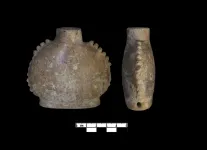
ELSE PRESS RELEASES FROM THIS DATE:
2021-01-15
Partially protected areas - marine reserves that allow some forms of fishing - are no more effective socially or ecologically than open marine areas in Australia's Great Southern Reef, a new UNSW study has concluded.
The research, published in Conservation Biology today, comes at a time when the High Ambition Coalition of 50 countries of the world (which does not include Australia) have pledged to protect more than 30 per cent of the planet's lands and seas by the end of this decade. But not all protected areas are created equal.
The UNSW study discovered partially protected areas in southern Australia had no more fish, invertebrates or algae and no difference in ...
2021-01-15
Researchers from Kumamoto University (Japan) have found an Edo period document that clearly indicates the Hosokawa clan, rulers of the Kokura Domain (modern-day Fukuoka Prefecture), completely stopped producing wine in 1632, the year before the shogunate ordered them to move to the Higo Domain (now Kumamoto Prefecture). The researchers believe that the discontinuation of wine production was directly related to this move and because it was considered to be a drink of a religion that was harshly suppressed in Japan at that time, Christianity.
Previous analysis of historical documents revealed that the lord of the Hosokawa clan, Tadatoshi Hosokawa, ordered wine production from 1627 to 1630 for medicinal use. His ...
2021-01-15
Divergences between scientific and Indigenous and Local Knowledge can provide a better understanding of why local pastoralists may be willing, or not, to participate in conservation initiatives for carnivores, a study from University of Helsinki suggests.
Carnivore conservation has historically been based primarily on scientific knowledge using a wide range of sampling methods, such as camera trapping and track surveys. However, the estimates of these common ecological sampling methods can be quite uncertain and can depend on accessibility and geology, which is the case of many remote areas, such as Sibiloi National Park in Northern Kenya. For this reason, the inclusion of local communities that share ...
2021-01-15
A research team led by scientists at the RIKEN Nishina Center for Accelerator-Based Science (RNC) has successfully created larger-than-usual strains of zooplankton -- which are used in fish nurseries -- by creating mutations with a heavy ion beam. The new strains of zooplankton could contribute to improving the survival rate and optimizing the growth of juvenile fish in aquaculture.
Economically important fish species, such as bluefin tuna, yellowtail, flatfish and groupers, are fed live bait until they are large enough to be fed with artificial foods. ...
2021-01-15
Any building project requires the formulation of a series of initial plans prior to starting construction to serve as a basis and guide for the whole process. A similar procedure is followed in software development, with the inclusion of a specific step known as modelling. "The process is equivalent to the production of a set of plans for a building before its construction," explained Universitat Oberta de Catalunya (UOC) Faculty of Computer Science, Multimedia and Telecommunications professor and member of the SOM Research Lab research group -from the Internet Interdisciplinary Institute (IN3)-, Robert Clarisó.
Engineers use modelling to describe ...
2021-01-15
In the last decades, Artificial Intelligence has shown to be very good at achieving exceptional goals in several fields. Chess is one of them: in 1996, for the first time, the computer Deep Blue beat a human player, chess champion Garry Kasparov. A new piece of research shows now that the brain strategy for storing memories may lead to imperfect memories, but in turn, allows it to store more memories, and with less hassle than AI. The new study, carried out by SISSA scientists in collaboration with Kavli Institute for Systems Neuroscience & Centre for Neural Computation, Trondheim, Norway, has just been published in Physical Review Letters.
Neural networks, real or artificial, learn by tweaking the connections ...
2021-01-15
An innovative new study is set to examine if changing our mealtimes to earlier or later in the day could reduce the risk of developing Type 2 diabetes.
Led by Dr Denise Robertson, Professor Jonathan Johnston and post graduate researcher Shantel Lynch from the University of Surrey, the study, outlined in the journal Nutrition Bulletin, will investigate if changing the time we eat during the day could reduce risk factors such as obesity and cholesterol levels that are typically associated with the development of Type 2 diabetes. The team of researchers will also for the first time investigate, via a series of interviews with participants and their friends and family, the impact of such changes on home life, work/social commitments and whether co-habitants of those who make such ...
2021-01-15
Having genitals of a certain shape and size gives male flies a major reproductive advantage, new research shows.
University of Exeter scientists examined the reproductive success of male Drosophila simulans flies both alone with a female and in various states of competition with other males.
Certain genital shapes were consistently better in terms of number of offspring sired.
However - surprisingly, given how fast genital form evolves - the selection documented was rather weak.
"Male genitals generally, and in Drosophila specifically, evolve very quickly, so we were really surprised to find this weak selection," said Professor David Hosken, of the University of Exeter.
"Selection is the major mechanism of evolution and hence where we see rapid evolution, ...
2021-01-15
Mitochondria are vital for the human body as cellular powerhouses: They possess more than 1,000 different proteins, required for many central metabolic pathways. Disfunction of these lead to severe diseases, especially of the nervous system and the heart. In order to transport proteins and metabolites, mitochondria contain a special group of so-called beta-barrel membrane proteins, which form transport pores in the outer mitochondrial membrane. So far, scientists have not been able to explain the operating mode of the sorting and assembly machinery (SAM) for the biogenesis of these beta-barrel proteins. A team led by Prof. Dr. Toshiya Endo from Kyoto University/Japan, Prof. Dr. Nils Wiedemann and ...
2021-01-15
Guangzhou, January 15, 2021: New journal BIO Integration (BIOI) publishes its fourth issue, volume 1, issue 4. BIOI is a peer-reviewed, open access, international journal, which is dedicated to spreading multidisciplinary views driving the advancement of modern medicine. Aimed at bridging the gap between the laboratory, clinic, and biotechnology industries, it will offer a cross-disciplinary platform devoted to communicating advances in the biomedical research field and offering insights into different areas of life science, in order to encourage cooperation and exchange among scientists, clinical researchers, and health care providers.
The issue contains an original article, three review ...
LAST 30 PRESS RELEASES:
[Press-News.org] WSU scientists identify contents of ancient Maya drug containers

